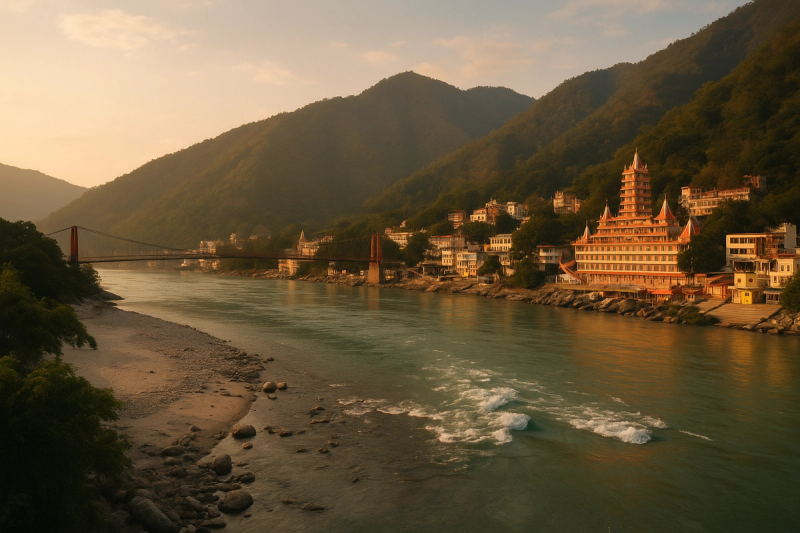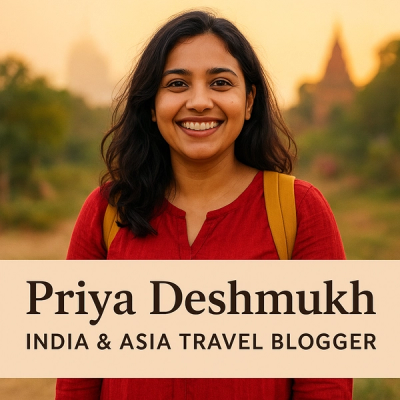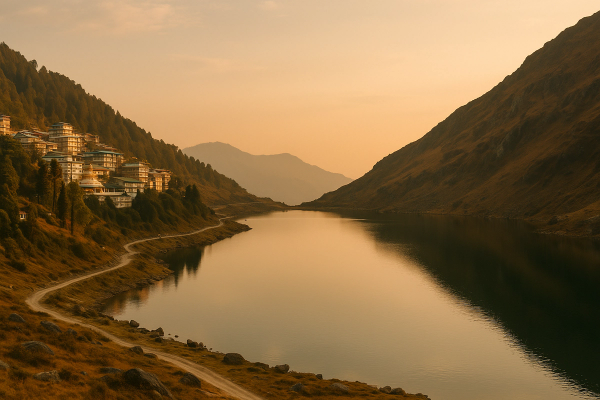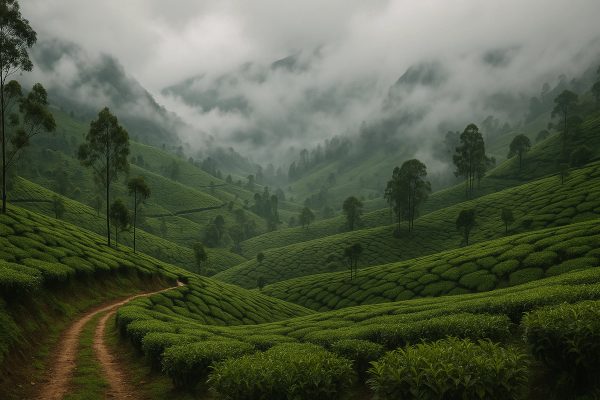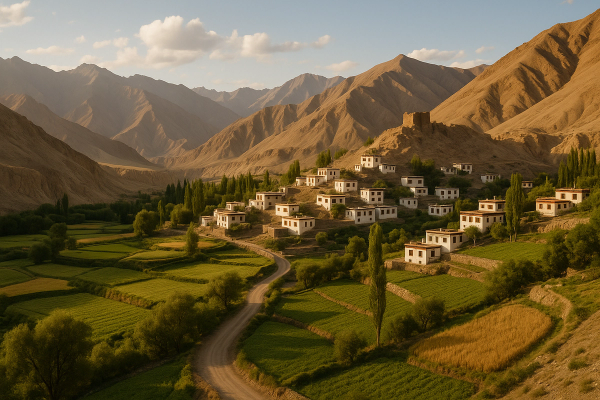Best Uttarakhand Adventure Destinations: Rafting, Trekking & More — honest notes from my pahadi-obsessed trips#
I keep going back to Uttarakhand like a moth goes to light. Mountains, rivers, pine smell, that crisp air that hits the lungs like a good wake-up slap. It’s not a single trip story, yaar — it’s a mashup of a few runs, some weekend jugaad, some long holidays where I did absolutely nothing except stare at Dobra-Chanti bridge and eat too much aloo ke gutke. If you’re hunting for proper Indian-style adventure (and not just Instagram reels), this is where rafting, trekking, skiing, bungee, wildlife… all meet chai and Maggi and friendly locals who call you “bhaiya” with a smile.¶
Rishikesh & the Ganga: Rafting that’ll make your heart thump#
First things first, Rishikesh. It’s the default adventure HQ, not even up for debate. I’ve done the classic Shivpuri–Rishikesh stretch a couple times — once in early March when the water felt like a freezer, once in late October when the sun warmed my bones. Best season is generally Oct to June, avoid peak monsoon because rafting usually pauses due to high flow and safety protocols. Prices? Expect roughly ₹1,200–₹1,500 for the 9–12 km beginner run (Brahmpuri–NIM beach) and ₹1,800–₹2,500 for 16–24 km. Always wear that helmet and life jacket, no heroism. Operators now follow stricter SOPs (as of 2025 season, they’re checking IDs, doing medical disclaimers, etc.), so book with licensed folks only. Reaching here is easy — buses from Delhi overnight, trains to Haridwar, Jolly Grant airport near Dehradun, and plenty of shared cabs.¶
- Shivpuri stretch is the sweet spot — good rapids, not too crazy, perfect for first timers
- Kaudiyala side has tougher rapids. Only go with experienced guides, not for casual vibes
- International Yoga Festival happens annually in March, so city gets busy — plan ahead if you want quieter rivers
Bungee at Mohan Chatti: jump, scream, then laugh like an idiot#
I can talk big about adventure, but when I stood on the bungee platform at Mohan Chatti… legs turned to noodles. Jumpin Heights runs this 83 m jump that looks harmless until you’re peering down and suddenly every life choice feels questionable. But the crew is chill, properly trained, and they don’t push you until you say yes. I paid about ₹3,700–₹4,500 for the jump (depends on season and combos with giant swing or flying fox). Book your slot, don’t just land up on a busy weekend. There’s a weight and health screening, so don’t try to hide stuff — these safety checks are for your own good, bhai. And yes, the certificate and the video make you look wild even if you squeaked mid-air.¶
Tehri Lake & Auli: water sports vs winter sports, pick your poison#
Tehri is like a sudden surprise — you drive out thinking hills+hills, then this massive blue lake opens up. Kayaking, jet-ski, speed boats, and paddle boards are quite popular, with combos generally costing ₹800–₹2,000. The Tehri Lake Festival happens almost every year, with local music, food stalls, and demo activities. Views of Dobra-Chanti bridge are chef’s kiss. For stays, you’ll find homestays around New Tehri in the ₹1,200–₹2,500 range and boutique places ₹3,500+. Now, if cold is your thing, Auli is winter candy. Dec to early March, if snowfall cooperates, you can try beginner ski lessons ₹1,500–₹3,000/day, rent gear, and hop on the ropeway from Joshimath (price fluctuates, budget approx ₹1,000–₹1,500). The slopes can get crowded on holidays, so weekdays are nicer if you can swing it.¶
Trek time: Kedarkantha, Har Ki Dun, Nag Tibba, Kuari Pass — pick a trail, pack your lungs#
Garhwal is basically a map of trails. I’ve done Kedarkantha in late Dec — Sankri base village has that winter fairytale vibe. Har Ki Dun is longer, more valley feel, green and slick after rains. Nag Tibba is my favourite quickie near Mussoorie, perfect for when you want a trek but only have a weekend. Kuari Pass? The views of Nanda Devi, Trishul, all those big boys, it’s like flipping to the last page of the picture book. Do note: camping in high bugyals has restrictions by court orders — operators now use designated camps and lower meadows. Always carry your ID and check forest permits and local rules. Guides are worth it, not just for safety, but you learn which dhaba makes the best pahadi raita.¶
- Kedarkantha: Dec–Mar snow, 3–4 days, altitude ~3,800 m, base Sankri
- Har Ki Dun: Apr–Jun & Sep–Nov, 5–7 days, valley trek, base Sankri
- Nag Tibba: All year (avoid heavy monsoon), 1–2 days, base Pantwari
- Kuari Pass: Oct–Apr best, 3–5 days, base Joshimath/Auli
Valley of Flowers & Hemkund Sahib: flowers, faith, and thin air#
If there’s one trek that made me feel tiny and happy, it’s Valley of Flowers. The bloom goes mad around July–August, but the park opens June to Oct, roughly. You enter via Ghangaria, pay a fee (Indians around ₹150 for the first day, ₹50 extra for subsequent days), timing is strict and no camping inside. Hemkund Sahib sits above at ~4,632 m and is straight-up steep — the lake and gurdwara feel otherworldly. Weather is moody, rain gear is not optional. Stay options in Ghangaria are simple lodges and GMVN, ₹1,200–₹3,000 typically. Start early, keep snacks, don’t litter, and move slow if you feel breathless. AMS is real up here, no jokes.¶
Chopta–Tungnath–Chandrashila: sunrise that almost made me cry (no shame)#
Chopta is cool even if you just sit around, but the Tungnath climb is short and spicy. Highest Shiva temple at ~3,680 m, then push up to Chandrashila above 4,000 m for that panorama that makes the entire trip feel worth it. I did a winter attempt once — patches of ice made me wobble, so microspikes or at least decent shoes are key. Spring is rhododendron season, autumn is crisp and clear. Dhabas here do hot tea and paratha that taste five times better at altitude. Night stays in Chopta or nearby villages run ₹1,200–₹2,500 for basic rooms, a bit more for cozy cabins.¶
Jim Corbett: not exactly adventure sports, but the thrill is legit#
Safari mornings in Corbett are another kind of adrenaline. You book zones online on the official portal — Bijrani, Jhirna, Dhela, Durga Devi, Sitabani buffer, and Dhikala if you manage a night stay permit. Costs depend on zone and jeep, usually ₹4,500–₹6,500 per gypsy per safari, split among your group. Don’t expect a tiger on demand, enjoy elephants, birds, and the forest hush. Best months are Oct–June. Monsoon brings closures in some zones. Follow guides’ instructions, and don’t stand up while the jeep’s moving, ya. It’s not DDLJ.¶
Getting around, stays, and the money reality#
Transport’s quite straightforward. Delhi to Dehradun/Rishikesh by overnight bus or train to Haridwar, then local buses or shared jeeps. For Kumaon, Kathgodam is your railhead for Nainital, Almora, Binsar, Munsiyari. Pantnagar airport helps sometimes, but flights aren’t always frequent. Accomodations range from hostels at ₹500–₹1,000 per bed (Rishikesh, Joshimath, Mussoorie) to homestays ₹1,200–₹2,500 and mid-range hotels ₹3,500–₹6,000. In remote trek bases, carry cash — ATMs can be moody and sometimes just “no cash” all day. Mobile network dips after a point. Most villages are super welcoming, but please, be kind, don’t haggle like it’s a sabzi market over a few hundred rupees. Tourism keeps these places running.¶
- Rafting: ₹1,200–₹2,500 per person depending on stretch
- Bungee: ~₹3,700–₹4,500 per jump, combos extra
- Tehri water sports: ₹800–₹2,000 for basic combos
- Ski lessons Auli: ₹1,500–₹3,000/day + gear
- Trek packages: ₹5,000–₹12,000 depending days and inclusions
Food you cannot skip (or you’ll regret it, actually)#
Local plates are half the adventure. Garhwali chainsoo and kafuli with mandua (ragi) rotis are soul food. Aloo ke gutke with bhang ki chutney at a road-side dhaba tasted like heaven after Tungnath. Kumaoni bal mithai and singori are sweet trouble, you won’t stop at one. In Rishikesh, cafes along Laxman Jhula do great smoothie bowls and coffee if that’s your thing, but don’t miss simple thalis. Mountain Maggi is a personality, not a dish. And pahadi raita is somehow ten times yummier at altitude — don’t ask me the science.¶
Safety, seasons, and what’s new-ish#
Monsoon (roughly July–Sept) is landslide season. I’ve been stuck behind a roadblock near Rudraprayag for 4 hours — carry snacks, water, patience. Easy rule: trek in post-monsoon or winter, raft in winter–spring, ski in mid-winter, safari mostly Oct–June. Check weather alerts and road conditions on the Uttarakhand Police or state disaster management channels before you go. Char Dham Yatra has mandatory registration now, and even for Valley of Flowers or Corbett you’re dealing with permits and online slots — book early in peak season. Many areas enforce plastic bans and strict waste rules, so carry a refill bottle and a small trash bag. Adventure operators have tightened safety SOPs these days, which is good news. I honestly feel the scene’s gotten more responsible compared to a few years back. Oh and quick tip — basic travel insurance covering adventure activities can save you headaches, even if you never claim it.¶
Final tiny note: in 2025 the rafting operators around Rishikesh have been extra strict about helmets, age checks, and river levels. Feels more professional now, fewer shady pop-up offers. Always pick licensed outfits, ask for receipts, and don’t be shy to ask about guide experience.¶
Offbeat corners I keep recommending#
Mori and Netwar by the Tons River is my happy place — quieter rafting scene, pine forests, ridiculously photogenic evenings. Dayara Bugyal is stunning when the meadows glow, though camping rules apply so go with a legit operator and respect the bugyals. Binsar for slow mornings and bird calls. Munsiyari if you want bigger drama with Panchachuli views, though it’s a longer haul from the plains. Sankri as a base is great for many treks, and the homestays there have that warm, real hospitality that makes you want to just stay an extra day for no reason.¶
Wrapping up — go, but go nicely#
Uttarakhand is the only place where I’ve finished a day rafting and then just sat at the ghat watching sadhus and kids feeding fish, feeling weirdly calm after all the chaos. It’s dramatic and mellow at the same time. If you’re planning, mix the hits (Rishikesh, Chopta, Auli) with a couple offbeat stops (Mori, Binsar). Travel light, respect locals, eat lots, and choose safety over ego every single time. And if you want more grounded travel stories and planning tips, check out AllBlogs.in — I stumble on good ideas there all the time, not gonna lie.¶

